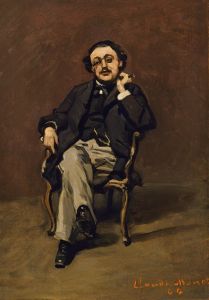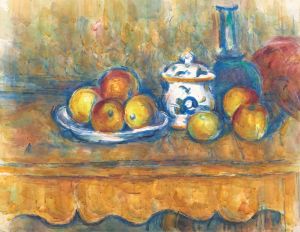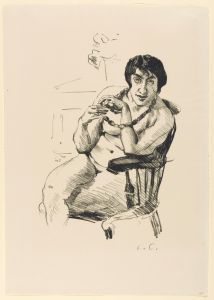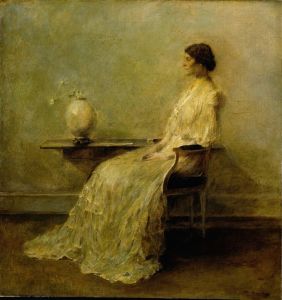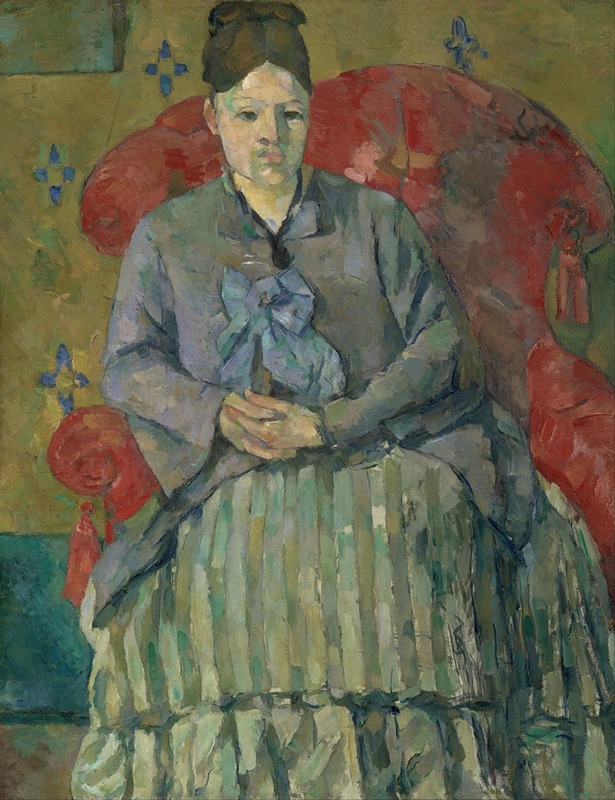
Madame Cézanne in a Red Armchair
A hand-painted replica of Paul Cézanne’s masterpiece Madame Cézanne in a Red Armchair, meticulously crafted by professional artists to capture the true essence of the original. Each piece is created with museum-quality canvas and rare mineral pigments, carefully painted by experienced artists with delicate brushstrokes and rich, layered colors to perfectly recreate the texture of the original artwork. Unlike machine-printed reproductions, this hand-painted version brings the painting to life, infused with the artist’s emotions and skill in every stroke. Whether for personal collection or home decoration, it instantly elevates the artistic atmosphere of any space.
"Madame Cézanne in a Red Armchair" is an oil painting by the renowned French Post-Impressionist artist Paul Cézanne. Created around 1877, this artwork is one of several portraits Cézanne painted of his wife, Marie-Hortense Fiquet. The painting is notable for its exploration of form, color, and composition, which are hallmarks of Cézanne's innovative approach to art.
Paul Cézanne, born in 1839 in Aix-en-Provence, France, is often credited with laying the groundwork for the transition from 19th-century Impressionism to 20th-century Cubism. His work is characterized by a unique method of building form with color and his analytical approach to nature. Cézanne's influence on modern art is profound, impacting artists such as Pablo Picasso and Henri Matisse.
"Madame Cézanne in a Red Armchair" depicts Marie-Hortense seated in a plush, red armchair. The composition is carefully constructed, with Cézanne's characteristic use of geometric shapes and planes to create depth and structure. The red armchair serves as a vibrant contrast to the more subdued tones of Madame Cézanne's clothing and the background, drawing the viewer's attention to her figure.
Cézanne's portraits of his wife are known for their introspective quality. In this painting, Madame Cézanne's expression is calm and reserved, reflecting the artist's focus on capturing the essence of his subject rather than a momentary expression. The brushwork is deliberate and methodical, with Cézanne applying layers of color to build the form and texture of the scene.
The painting is also an example of Cézanne's departure from traditional perspective. Instead of adhering to the conventional rules of linear perspective, Cézanne employs a more intuitive approach, allowing different parts of the painting to exist in their own spatial planes. This technique contributes to the sense of solidity and permanence in his work, as well as a subtle tension between the two-dimensional surface and the three-dimensional illusion.
"Madame Cézanne in a Red Armchair" is housed in the collection of the Museum of Fine Arts, Boston. It is one of several portraits of Madame Cézanne that the artist completed over the course of their relationship. These portraits are significant not only for their artistic merit but also for providing insight into Cézanne's personal life and his relationship with his wife.
Cézanne's approach to portraiture was unconventional for his time. While many of his contemporaries focused on capturing the likeness and personality of their subjects, Cézanne was more concerned with the formal elements of painting. His portraits, including "Madame Cézanne in a Red Armchair," are less about the individual and more about the exploration of form, color, and composition.
The painting exemplifies Cézanne's belief that all forms in nature can be reduced to geometric shapes. This philosophy is evident in the way he constructs the figure of Madame Cézanne and the surrounding elements, using a series of planes and facets to create a cohesive whole. This analytical approach would later influence the development of Cubism and other modern art movements.
In summary, "Madame Cézanne in a Red Armchair" is a significant work in Paul Cézanne's oeuvre, showcasing his innovative approach to portraiture and his mastery of form and color. The painting remains an important piece in the study of Post-Impressionism and Cézanne's lasting impact on the art world.





